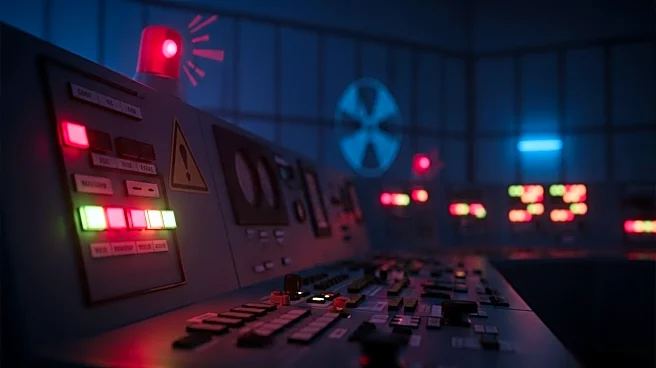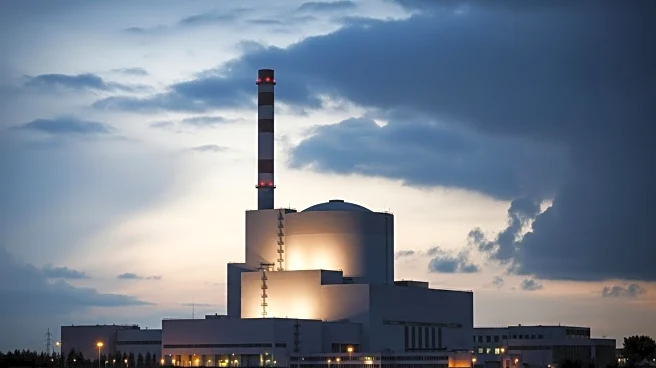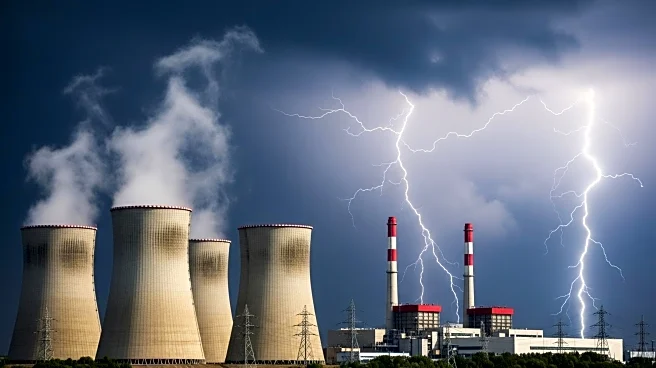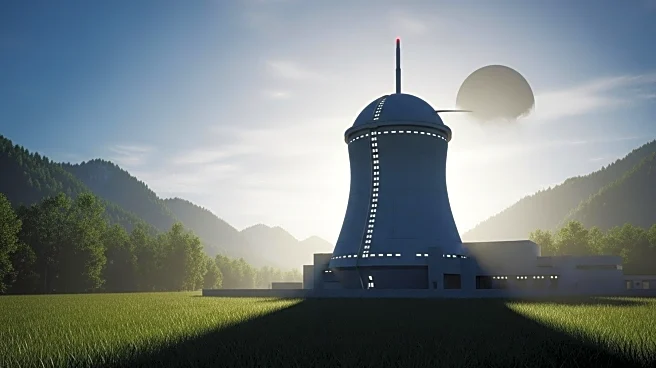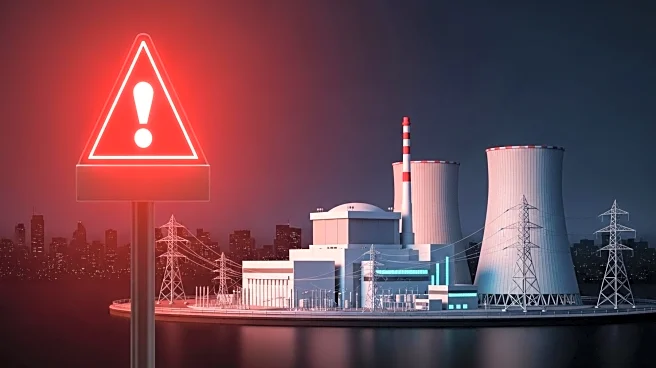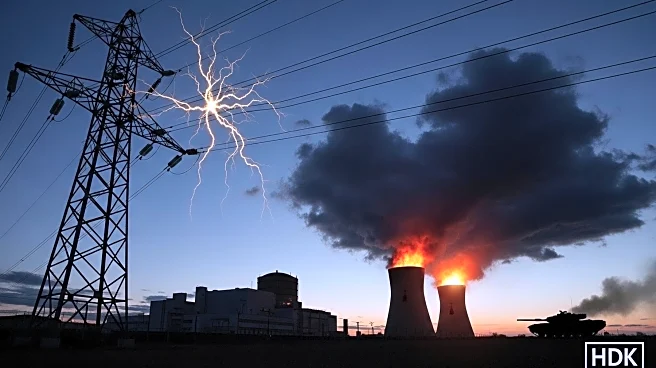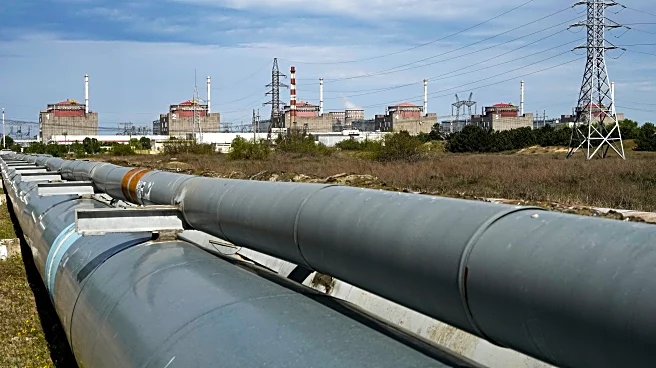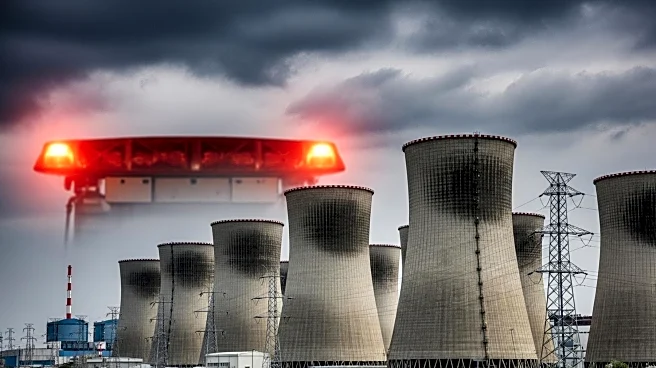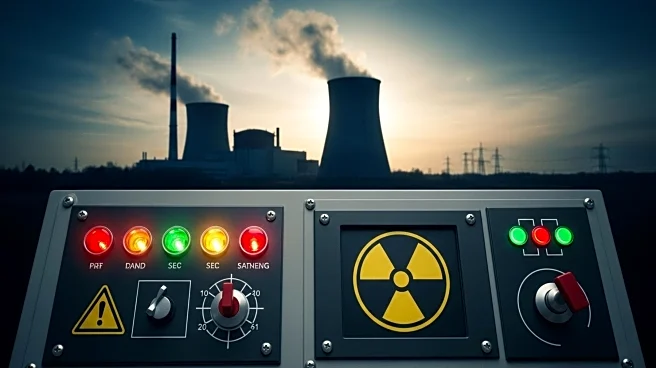What's Happening?
Russia has been accused of deliberately sabotaging the last remaining power line into the Zaporizhzhia nuclear plant in Ukraine. Satellite imagery analyzed by Greenpeace and McKenzie Intelligence shows no evidence of Ukrainian shelling, contradicting Russian claims that ongoing shelling is preventing repairs. The plant has been relying on backup diesel generators for cooling, as external power has been down for eight days. The International Atomic Energy Agency has expressed concerns over the sustainability of this situation, highlighting the risk of a nuclear meltdown. Russia appears to be preparing to integrate the plant into its power grid, with construction of a new high voltage line from Mariupol underway.
Why It's Important?
The sabotage of the power line at Zaporizhzhia nuclear plant poses significant risks to nuclear safety in the region. The reliance on backup generators is not sustainable long-term, and a failure could lead to a nuclear meltdown, similar to the Fukushima disaster in Japan. This situation also underscores the geopolitical tensions between Russia and Ukraine, with Russia potentially using the crisis to assert control over the plant. The integration of the plant into the Russian grid could further complicate international relations and impact energy security in Europe.
What's Next?
The situation at Zaporizhzhia remains precarious, with ongoing efforts to maintain generator power and prevent a meltdown. The international community, including the IAEA, is likely to continue monitoring the situation closely. Further diplomatic and political actions may be taken to address the safety concerns and prevent Russia from fully integrating the plant into its grid. The potential for escalation in the region remains high, with implications for energy security and geopolitical stability.

